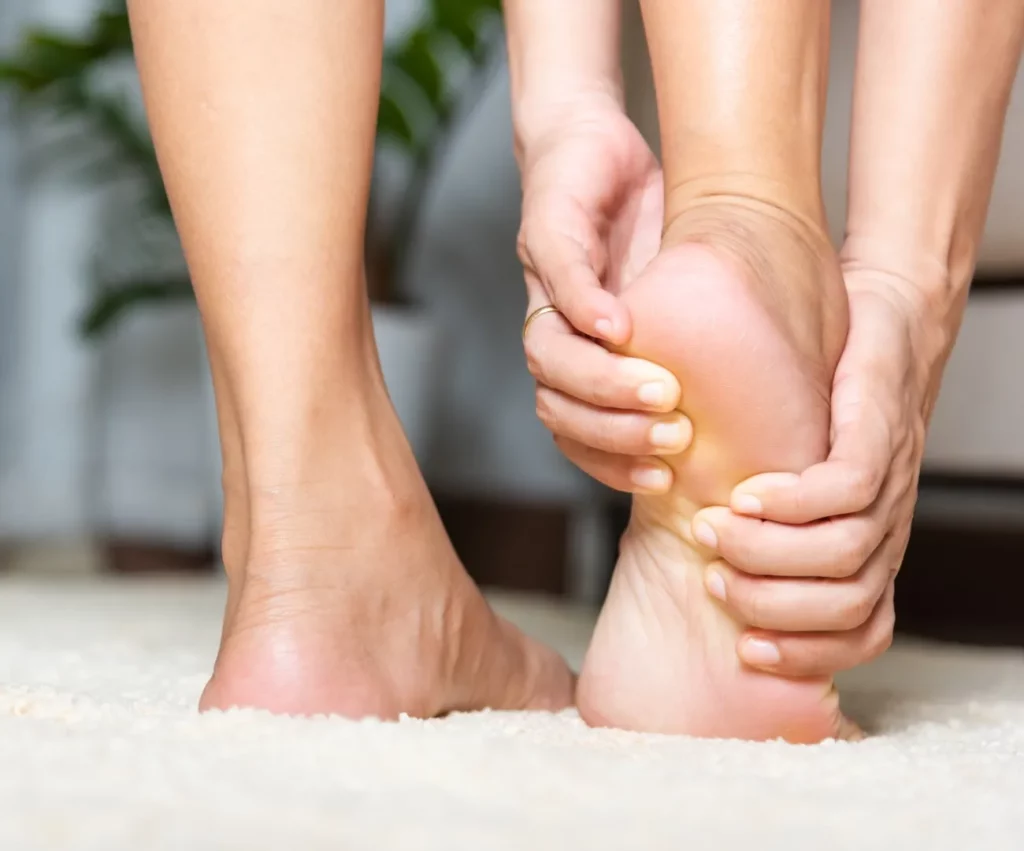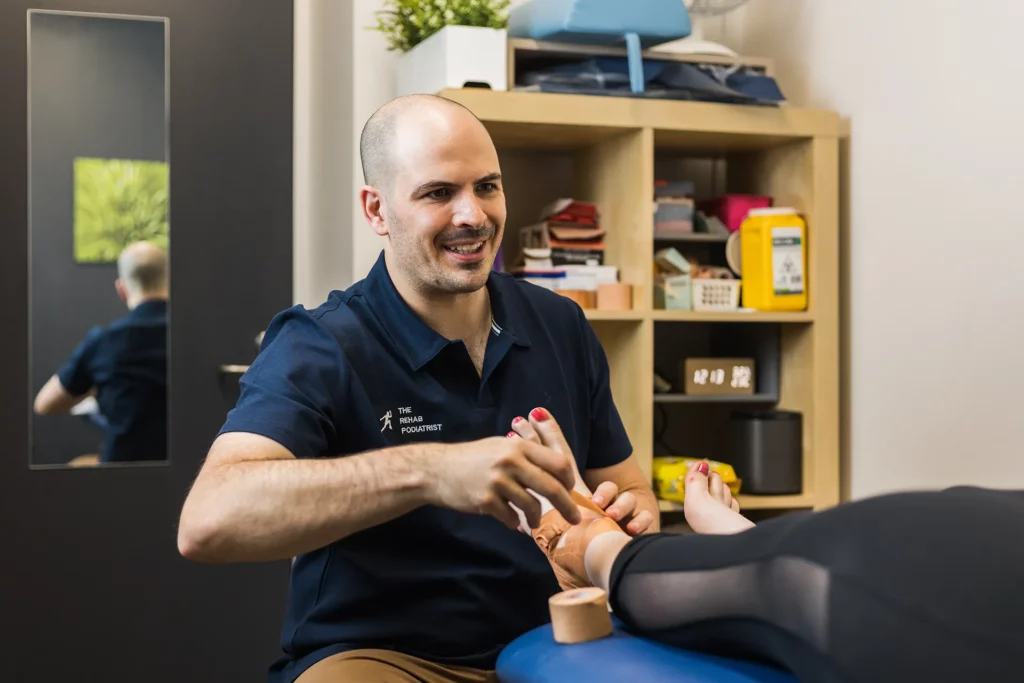Heel Pain (Plantar Fasciitis)

Symptoms
Heel pain is one of the most common foot and ankle conditions people will suffer. Often called plantar fasciitis, people usually suffer pain when they first get up in the morning or after a period of rest, which improves with walking. As the condition progresses, it’s common for pain to start coming on when walking or standing and be a lot worse the next day.
Symptoms usually start building slowly with no immediately identifiable cause and can become quite painful, causing people a lot of concern.
For those whose pain doesn’t follow this pattern, it’s likely they’re suffering from another cause of pain other than plantar fasciitis, such as a bone or fat pad bruising and in rare cases, a tear or stress fracture.
How our services can help with this condition
While the condition is very common, there’s no one best way to treat heel pain.
I help people everyday by creating personalised treatment programs. I do this by performing a thorough assessment to identify whether you’re suffering from plantar fasciitis or another condition, what is causing your pain and what treatment options would be the best for you.
Common treatments can include:
- Taping
- Stretching
- Strength exercises
- Footwear
- Foot orthoses

Heel Pain FAQs
Does everyone with heel pain need foot orthoses?
The answer is no. While some people may experience a lot of benefit from them, it’s not a treatment that will work for everyone and for those who could benefit from them, it’s not always required to get a good outcome.
As part of all my consults, we’ll discuss all the treatment options available, the pros and cons of each and decide together what’s the best options for you.
What if I’ve tried some treatments before and they haven’t worked? E.g. foot orthoses, strength exercises etc.
l often see people for second opinions and having tried some treatments previously is really helpful to help figure out what works best for you and in some cases help determine whether you’re suffering from heel pain or another condition.
Another consideration is that not all treatments are equal. Foot orthoses can be designed inappropriately, rehabilitation exercises could be inefficient or ineffective for your condition.
This will all be explained to you at your consultation and together we can figure out what’s the next best step for you going forward.
Can I still run/walk with heel pain?
For most people, it’s safe and preferable for them to stay active. As part of your consultation we’ll discuss whether it’s appropriate for you to continue being active and give you guidance on how to adjust what you’re doing to ensure your condition doesn’t get worse.
